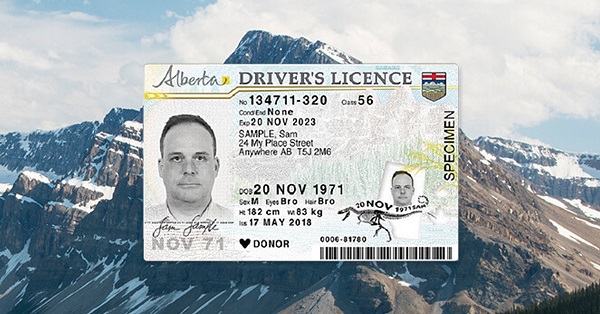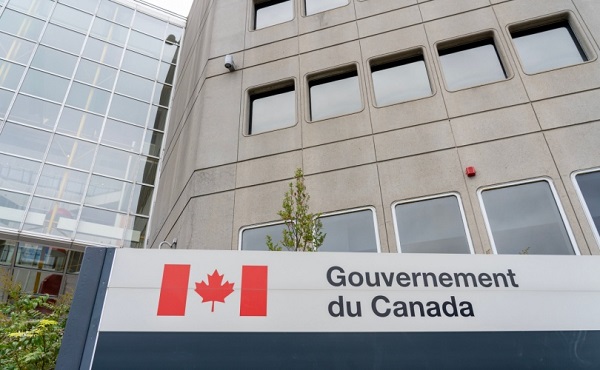Addictions
“Government Heroin” documentary exposes rampant safer supply fraud

By Adam Zivo
There is no substitute for hearing testimony with your own ears and eyes.
Although there is ample evidence that Canada’s “safer supply” programs are being widely defrauded and flooding communities with opioids, advocates continue to deny that this problem exists. That’s why I premiered my new documentary this week, “Government Heroin,” which follows the story of Callum Bagnall, a 25-year-old student who purchased thousands of diverted safer supply pills in London, Ontario.
While many written accounts of safer supply fraud have been published in the Canadian media, this documentary provides, for the first time, an extended interview with a former addict who openly describes his own use of these diverted drugs. It is one thing to read these stories, and altogether another to watch and listen to them – so perhaps this will help dispel the myths that have been pushed, rather aggressively, by the harm reduction movement.
In the film, Callum explains how, three years ago, a friend informed him that drug users in the city were receiving “insane” amounts of free safer supply drugs – predominantly hydromorphone, an opioid as potent as heroin. While these drugs are meant to wean addicts off riskier street substances, the friend explained that recipients mostly sell their safer supply at bargain prices so they can procure stronger substances, such as illicit fentanyl.
At first, Callum thought this was a joke. He had been struggling with a moderate addiction to pharmaceutical opioids – mostly oxycodone and Percocet – but, as these pills were expensive and hard to find, his drug use remained stable. The idea that the government was showering individuals with hundreds of powerful opioid pills a month, for free and with essentially no supervision, seemed “almost like a dream for a drug addict.”
But then he connected with some safer supply clients and realized that everything that he had heard was true. Fueled by a near-limitless supply of dirt-cheap opioids, Callum’s drug use rapidly spun out of control and, for two years, his life fell into utter disarray. Although he went to rehab last year, he says that his mind remains muddled by the aftereffects of these drugs to this day.
“I would have already been at the end of my road and (would) have gone to rehab at that point, if safer supply drugs weren’t so cheap and available. With the small amount of money I was making, I was able to afford hundreds of safer supply pills a week because of how cheap they were,” he says.
It was obvious to Callum that these pills were not counterfeit, given their quality and consistency and the fact that they typically came in their original, labelled prescription bottles: “Usually the people I was buying them from would try to scratch out the doctor’s name or their name. They were kind of paranoid about that. But sometimes they would just give it to me with the label unripped, not covered with marker or anything.”
Callum estimates that 90 percent of the safer supply clients he interacted with were diverting their drugs – a figure that is fairly consistent with estimates provided by former drug users I interviewed in London last year, who typically placed the diversion rate among their circles at around 80 percent.
Callum also believes that organized crime is involved in the trafficking of these drugs, and recalled how one higher-level dealer said that he would drive to northern Ontario, where safer supply is essentially unavailable, with thousands of pills stowed in his trunk to resell at a significant profit.
Subscribe for free to get BTN’s latest news and analysis, or donate to our journalism fund.
While I was unable to independently verify Callum’s claim about intraprovincial trafficking, his testimony is consistent with information provided to me earlier this year by Michael Tibollo, Ontario’s Associate Minister of Mental Health and Addictions, who said that, based on certain police reports and epidemiological data, it is clear that there is a particular problem with safer supply drugs being trafficked from London to northern Ontario.
Callum was able to corroborate the general contours of his story by providing dozens of screenshots of time-stamped text conversations between himself and his former dealers (some of which appear in the documentary), as well as excerpts of his medical records indicating that he had been diagnosed with severe opioid use disorder and had been “buying safer supply from friends.”
He also called a safer supply patient whom he used to purchase drugs from, and, while I listened in, had her confirm that she had hundreds of pills ready to sell and could introduce him to a safer supply doctor if he wanted to get on the program. A video recording of this conversation was originally meant to be included in the documentary, but was cut to mitigate risk of retaliation.
Finally, Callum’s mother, a registered nurse, appears in the documentary and recounts finding safer supply prescription bottles in her son’s room on the day he went to rehab.
As public scrutiny of safer supply has increased over the past year, providers have insisted that they are closely monitoring diversion through urine testing. Yet Callum says that the clients he interacted with would occasionally, in the process of selling their drugs, withhold a few of their pills and openly admit to him that they needed these small amounts to pass their tests.
“(They) would also take one or two pills the night before they get their prescription, so that it looks like it’s in their system. It shows up on the urine tests. So they would use that to pass the urine tests, so that they would get another script the next week,” he says in the film.
The exploitation of this loophole was confirmed by Dr. Janel Gracey, an addiction physician who treated Callum and who is also featured in my documentary. She says that “it is known in the addiction world that urine testing is not effective at catching diversion” because such tests only measure the presence of a drug, not its quantity. A safer supply patient can divert almost all of their drugs and still pass their urine tests, she says, so long as they take just one pill before giving their samples.
Gracey characterizes Canada’s current safer supply system as an underregulated “free for all” that destabilizes patients while allowing some pharmacists and physicians to reap considerable profits. “I know people on the safer supply program that have never even used fentanyl, and that’s the whole point of the program: to get them off the fentanyl. So they’re just lining up and getting a bunch of (hydromorphone), really, for no reason,” she says.
Gracey estimates that, of her 400 patients, approximately half have used, or know someone who has used, diverted safer supply drugs. She says that inexpensive hydromorphone is now “readily available on every street corner here in London,” and that dealers are “bombarding” her patients with the drug, causing many of them to “fall off the rails.”
“We are seeing younger and younger patients come in, unfortunately. Fifteen (and) 16-year-olds coming in, and they’re getting hooked on (hydromorphone) because it’s so incredibly cheap. It’s cheaper than alcohol,” she says. “We do get a few coming in that are there because of fentanyl use, but usually even the (young fentanyl users) started with (hydromorphone).”
I encourage you to watch “Government Heroin,” as the 19-minute documentary provides a more visceral and comprehensive account of the harms described here. There is no substitute for hearing testimony with your own ears and eyes.
This article was originally published in The Bureau, a Canadian media outlet that investigates the intersections of organized crime, drug trafficking and foreign interference.
Subscribe to Break The Needle. Our content is always free – but if you want to help us commission more high-quality journalism, consider getting a voluntary paid subscription.
Addictions
No, Addicts Shouldn’t Make Drug Policy

By Adam Zivo
Canada’s policy of deferring to the “leadership” of drug users has proved predictably disastrous. The United States should take heed.
[This article was originally published in City Journal, a public policy magazine and website published by the Manhattan Institute for Policy Research]
Progressive “harm reduction” advocates have insisted for decades that active users should take a central role in crafting drug policy. While this belief is profoundly reckless—akin to letting drunk drivers set traffic laws—it is now entrenched in many left-leaning jurisdictions. The harms and absurdities of the position cannot be understated.
While the harm-reduction movement is best known for championing public-health interventions that supposedly minimize the negative effects of drug use, it also has a “social justice” component. In this context, harm reduction tries to redefine addicts as a persecuted minority and illicit drug use as a human right.
This campaign traces its roots to the 1980s and early 1990s, when “queer” activists, desperate to reduce the spread of HIV, began operating underground needle exchanges to curb infections among drug users. These exchanges and similar efforts allowed some more extreme LGBTQ groups to form close bonds with addicts and drug-reform advocates. Together, they normalized the concept of harm reduction, such that, within a few years, needle exchanges would become officially sanctioned public-health interventions.
The alliance between these more radical gay rights advocates and harm-reduction proponents proved enduring. Drug addiction remained linked to HIV, and both groups shared a deep hostility to the police, capitalism, and society’s “moralizing” forces.
In the 1990s, harm-reduction proponents imitated the LGBTQ community’s advocacy tactics. They realized that addicts would have greater political capital if they were considered a persecuted minority group, which could legitimize their demands for extensive accommodations and legal protections under human rights laws. Harm reductionists thus argued that addiction was a kind of disability, and that, like the disabled, active users were victims of social exclusion who should be given a leading role in crafting drug policy.
These arguments were not entirely specious. Addiction can reasonably be considered a mental and physical disability because illicit drugs hijack users’ brains and bodies. But being disabled doesn’t necessarily mean that one is part of a persecuted group, much less that one should be given control over public policy.
More fundamentally, advocates were wrong to argue that the stigma associated with drug addiction was senseless persecution. In fact, it was a reasonable response to anti-social behavior. Drug addiction severely impairs a person’s judgement, often making him a threat to himself and others. Someone who is constantly high and must rob others to fuel his habit is a self-evident danger to society.
Despite these obvious pitfalls, portraying drug addicts as a persecuted minority group became increasingly popular in the 2000s, thanks to several North American AIDS organizations that pivoted to addiction work after the HIV epidemic subsided.
In 2005, the Canadian HIV/AIDS Legal Network published a report titled “Nothing about us without us.” (The nonprofit joined other groups in publishing an international version in 2008.) The 2005 report included a “manifesto” written by Canadian drug users, who complained that they were “among the most vilified and demonized groups in society” and demanded that policymakers respect their “expertise and professionalism in addressing drug use.”
The international report argued that addiction qualified as a disability under international human rights treaties, and called on governments to “enact anti-discrimination or protective laws to reduce human rights violations based on dependence to drugs.” It further advised that drug users be heavily involved in addiction-related policy and decision-making bodies; that addict-led organizations be established and amply funded; and that “community-based organizations . . . increase involvement of people who use drugs at all levels of the organization.”
While the international report suggested that addicts could serve as effective policymakers, it also presented them as incapable of basic professionalism. In a list of “do’s and don’ts,” the authors counseled potential employers to pay addicts in cash and not to pass judgment if the money were spent on drugs. They also encouraged policymakers to hold meetings “in a low-key setting or in a setting where users already hang out,” and to avoid scheduling meetings at “9 a.m., or on welfare cheque issue day.” In cases where addicts must travel for policy-related work, the report recommended policymakers provide “access to sterile injecting equipment” and “advice from a local person who uses drugs.”
The international report further asserted that if an organization’s employees—even those who are former drug users—were bothered by the presence of addicts, then management should refer those employees to counselling at the organization’s expense. “Under no circumstances should [drug addicts] be reprimanded, singled out or made to feel responsible in any way for the triggering responses of others,” stressed the authors.
Reflecting the document’s general hostility to recovery, the international report emphasized that former drug addicts “can never replace involvement of active users” in public policy work, because people in recovery “may be somewhat disconnected from the community they seek to represent, may have other priorities than active users, may sometimes even have different and conflicting agenda, and may find it difficult to be around people who currently use drugs.”
Subscribe for free to get BTN’s latest news and analysis – or donate to our investigative journalism fund.
The messaging in these reports proved highly influential throughout the 2000s and 2010s. In Canada, federal and provincial human rights legislation expanded to protect active addicts on the basis of disability. Reformers in the United States mirrored Canadian activists’ appeals to addicts’ “lived experience,” albeit with less success. For now, American anti-discrimination protections only extend to people who have a history of addiction but who are not actively using drugs.
The harm reduction movement reached its zenith in the early 2020s, after the Covid-19 pandemic swept the world and instigated a global spike in addiction. During this period, North American drug-reform activists again promoted the importance of treating addicts like public-health experts.
Canada was at the forefront of this push. For example, the Canadian Association of People Who Use Drugs released its “Hear Us, See Us, Respect Us” report in 2021, which recommended that organizations “deliberately choose to normalize the culture of drug use” and pay addicts $25-50 per hour. The authors stressed that employers should pay addicts “under the table” in cash to avoid jeopardizing access to government benefits.
These ideas had a profound impact on Canadian drug policy. Throughout the country, public health officials pushed for radical pro-drug experiments, including giving away free heroin-strength opioids without supervision, simply because addicts told researchers that doing so would be helpful. In 2024, British Columbia’s top doctor even called for the legalization of all illicit drugs (“non-medical safer supply”) primarily on the basis of addict testimonials, with almost no other supporting evidence.
For Canadian policymakers, deferring to the “lived experiences” and “leadership” of drug users meant giving addicts almost everything they asked for. The results were predictably disastrous: crime, public disorder, overdoses, and program fraud skyrocketed. Things have been less dire in the United States, where the harm reduction movement is much weaker. But Americans should be vigilant and ensure that this ideology does not flower in their own backyard.
Subscribe to Break The Needle.
Our content is always free – but if you want to help us commission more high-quality journalism,
consider getting a voluntary paid subscription.
Addictions
Why North America’s Drug Decriminalization Experiments Failed

A 2022 Los Angeles Times piece advocates following Vancouver’s model of drug liberalization and treatment. Adam Zivo argues British Columbia’s model has been proven a failure.
By Adam Zivo
Oregon and British Columbia neglected to coerce addicts into treatment.
Ever since Portugal enacted drug decriminalization in 2001, reformers have argued that North America should follow suit. The Portuguese saw precipitous declines in overdoses and blood-borne infections, they argued, so why not adopt their approach?
But when Oregon and British Columbia decriminalized drugs in the early 2020s, the results were so catastrophic that both jurisdictions quickly reversed course. Why? The reason is simple: American and Canadian policymakers failed to grasp what led to the Portuguese model’s initial success.
Contrary to popular belief, Portugal does not allow consequence-free drug use. While the country treats the possession of illicit drugs for personal use as an administrative offense, it nonetheless summons apprehended drug users to “dissuasion” commissions composed of doctors, social workers, and lawyers. These commissions assess a drug user’s health, consumption habits, and socioeconomic circumstances before using arbitrator-like powers to impose appropriate sanctions.
These sanctions depend on the nature of the offense. In less severe cases, users receive warnings, small fines, or compulsory drug education. Severe or repeat offenders, however, can be banned from visiting certain places or people, or even have their property confiscated. Offenders who fail to comply are subject to wage garnishment.
The Bureau is a reader-supported publication.
To receive new posts and support my work, consider becoming a free or paid subscriber.
Throughout the process, users are strongly encouraged to seek voluntary drug treatment, with most penalties waived if they accept. In the first few years after decriminalization, Portugal made significant investments into its national addiction and mental-health infrastructure (e.g., methadone clinics) to ensure that it had sufficient capacity to absorb these patients.
This form of decriminalization is far less radical than its North American proponents assume. In effect, Portugal created an alternative justice system that coercively diverts addicts into rehab instead of jail. That users are not criminally charged does not mean they are not held accountable. Further, the country still criminalizes the public consumption and trafficking of illicit drugs.
At first, Portugal’s decriminalization experiment was a clear success. During the 2000s, drug-related HIV infections halved, non-criminal drug seizures surged 500 percent, and the number of addicts in treatment rose by two-thirds. While the data are conflicting on whether overall drug use increased or decreased, it is widely accepted that decriminalization did not, at first, lead to a tidal wave of new addiction cases.
Then things changed. The 2008 global financial crisis destabilized the Portuguese economy and prompted austerity measures that slashed public drug-treatment capacity. Wait times for state-funded rehab ballooned, sometimes reaching a year. Police stopped citing addicts for possession, or even public consumption, believing that the country’s dissuasion commissions had grown dysfunctional. Worse, to cut costs, the government outsourced many of its addiction services to ideological nonprofits that prioritized “harm reduction” services (e.g., distributing clean crack pipes, operating “safe consumption” sites) over nudging users into rehab. These factors gradually transformed the Portuguese system from one focused on recovery to one that enables and normalizes addiction.
This shift accelerated after the Covid-19 pandemic. As crime and public disorder rose, more discarded drug paraphernalia littered the streets. The national overdose rate reached a 12-year high in 2023, and that year, the police chief of the country’s second-largest city told the Washington Post that, anecdotally, the drug problem seemed comparable to what it was before decriminalization. Amid the chaos, some community leaders demanded reform, sparking a debate that continues today.
In North America, however, progressive policymakers seem entirely unaware of these developments and the role that treatment and coercion played in Portugal’s initial success.
In late 2020, Oregon embarked on its own drug decriminalization experiment, known as Measure 110. Though proponents cited Portugal’s success, unlike the European nation, Oregon failed to establish any substantive coercive mechanisms to divert addicts into treatment. The state merely gave drug users a choice between paying a $100 ticket or calling a health hotline. Because the state imposed no penalty for failing to follow through with either option, drug possession effectively became a consequence-free behavior. Police data from 2022, for example, found that 81 percent of ticketed individuals simply ignored their fines.
Additionally, the state failed to invest in treatment capacity and actually defunded existing drug-use-prevention programs to finance Measure 110’s unused support systems, such as the health hotline.
The results were disastrous. Overdose deaths spiked almost 50 percent between 2021 and 2023. Crime and public drug use became so rampant in Portland that state leaders declared a 90-day fentanyl emergency in early 2024. Facing withering public backlash, Oregon ended its decriminalization experiment in the spring of 2024 after almost four years of failure.
The same story played out in British Columbia, which launched a three-year decriminalization pilot project in January 2023. British Columbia, like Oregon, declined to establish dissuasion commissions. Instead, because Canadian policymakers assumed that “destigmatizing” treatment would lead more addicts to pursue it, their new system employed no coercive tools. Drug users caught with fewer than 2.5 grams of illicit substances were simply given a card with local health and social service contacts.
This approach, too, proved calamitous. Open drug use and public disorder exploded throughout the province. Parents complained about the proliferation of discarded syringes on their children’s playgrounds. The public was further scandalized by the discovery that addicts were permitted to smoke fentanyl and meth openly in hospitals, including in shared patient rooms. A 2025 study published in JAMA Health Forum, which compared British Columbia with several other Canadian provinces, found that the decriminalization pilot was associated with a spike in opioid hospitalizations.
The province’s progressive government mostly recriminalized drugs in early 2024, cutting the pilot short by two years. Their motivations were seemingly political, with polling data showing burgeoning support for their conservative rivals.
The lessons here are straightforward. Portugal’s decriminalization worked initially because it did not remove consequences for drug users. It imposed a robust system of non-criminal sanctions to control addicts’ behavior and coerce them into well-funded, highly accessible treatment facilities.
Done right, decriminalization should result in the normalization of rehabilitation—not of drug use. Portugal discovered this 20 years ago and then slowly lost the plot. North American policymakers, on the other hand, never understood the story to begin with.
The Bureau is a reader-supported publication.
To receive new posts and support my work, consider becoming a free or paid subscriber.
Invite your friends and earn rewards
-

 Business1 day ago
Business1 day agoCarney Admits Deficit Will Top $61.9 Billion, Unveils New Housing Bureaucracy
-

 Alberta1 day ago
Alberta1 day agoAlberta first to add citizenship to licenses
-

 Alberta1 day ago
Alberta1 day agoBreak the Fences, Keep the Frontier
-

 Business7 hours ago
Business7 hours agoCarney’s ‘major projects’ list no cause for celebration
-

 Business6 hours ago
Business6 hours agoRed tape is killing Canadian housing affordability
-

 Business1 day ago
Business1 day agoCarney’s Ethics Test: Opposition MP’s To Challenge Prime Minister’s Financial Ties to China
-

 Business8 hours ago
Business8 hours agoGlobal elites insisting on digital currency to phase out cash
-

 Business1 day ago
Business1 day agoAttrition doesn’t go far enough, taxpayers need real cuts




